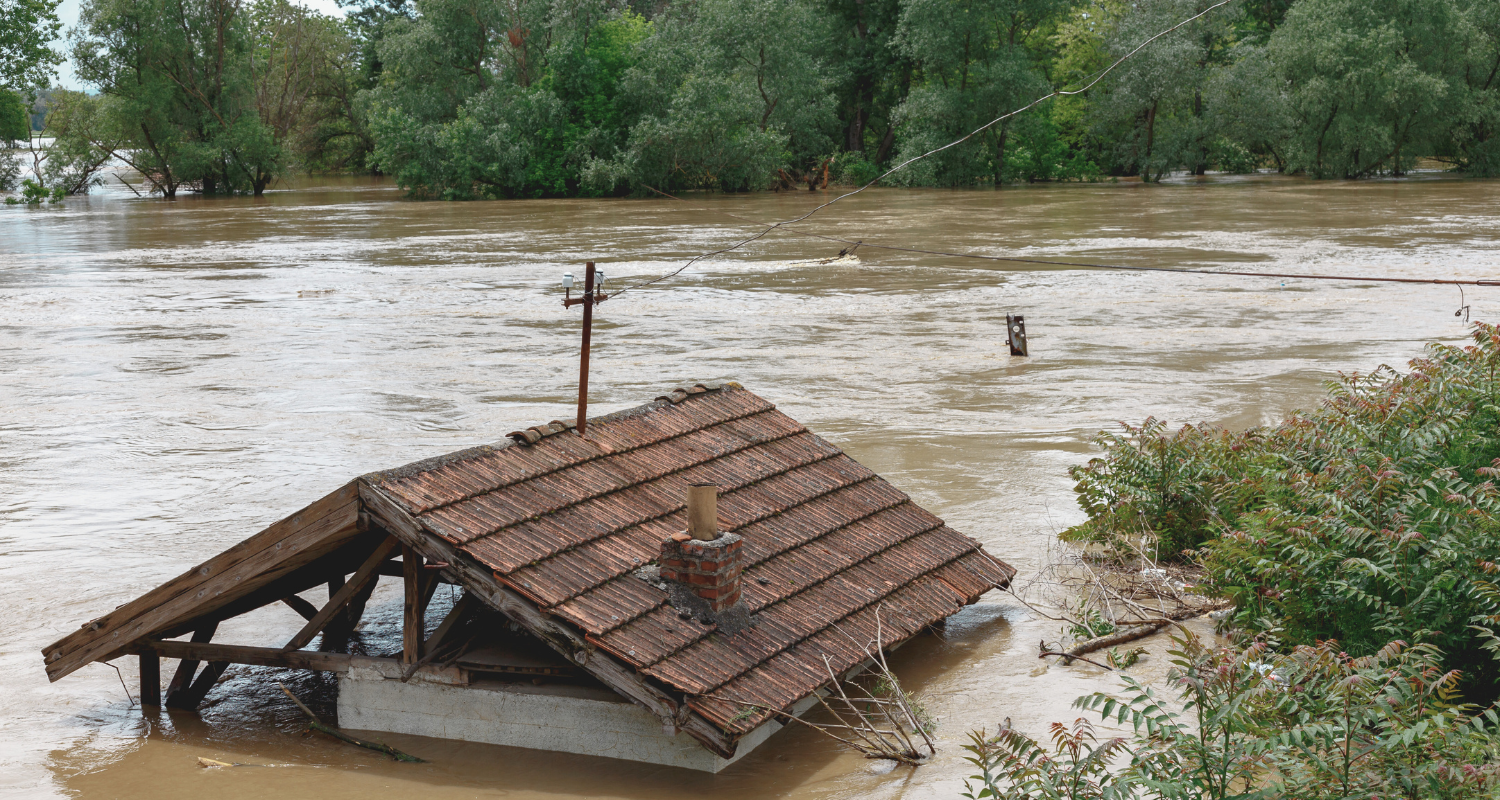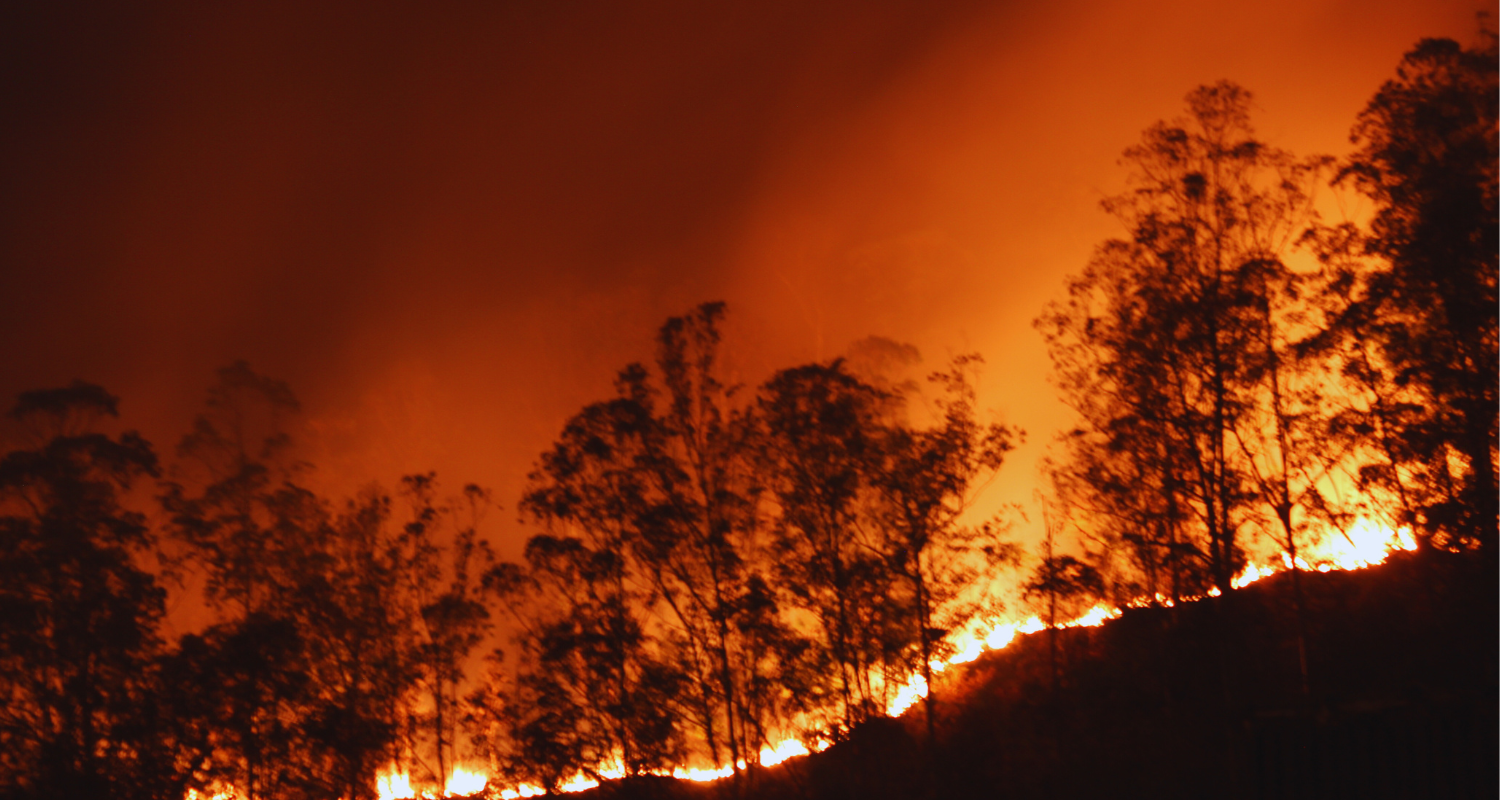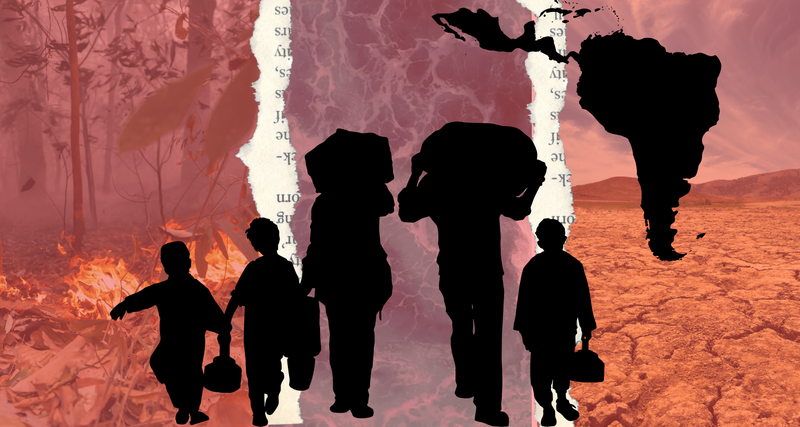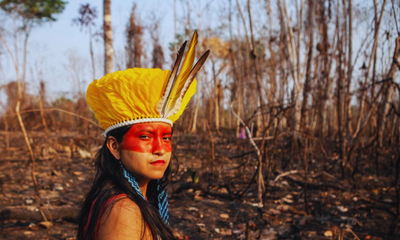Climate change is a global reality, with effects increasingly evident in rising temperatures and extreme weather events such as heatwaves, droughts, floods, storms, and wildfires. These phenomena have disrupted ecosystems, leading to biodiversity loss, ocean acidification, and the melting of polar ice caps and glaciers.
On a socioeconomic level, climate change in Latin America has contributed to a rise in heat-related illnesses, increased food insecurity, and driven population displacement. These shifts have forced many to become what experts now call “climate migrants” individuals compelled to leave home due to climate change-induced problems, including water scarcity, failed crops, rising sea levels, and stronger storms.
“Those who have contributed the most to climate change are the developed countries,” she said, “but the developing nations are the ones living through its consequences.” - Dr. Filiz Garip
According to a report from the European Union’s Copernicus Climate Change Service, 2024 was the warmest year on record globally, with average global temperatures exceeding pre-industrial levels by 1.5 degrees Celsius. The report also projects that this warming trend will continue in the coming decades.
The United Nations estimates that by 2050, more than 200 million people could become 'climate refugees' and/or 'climate migrants'. Similarly, the 2018 World Bank report Groundswell: Preparing for Internal Climate Migration concluded that climate change could displace more than 140 million people within their own countries in three densely populated regions — Sub-Saharan Africa, South Asia, and Latin America. The report warns that, without urgent climate action, tens of millions more could be displaced by 2050.
But this prediction is not inevitable. The World Bank report suggests climate-related migration in Latin America could drop to 44 million people if countries act quickly reducing greenhouse gas emissions, restoring ecosystems, and addressing development gaps. In other words, while the climate migration crisis can be reduced, it won't disappear entirely. The truth is migration is a constant.
What is Being Done for Climate Migrants in Latin America
In Latin America, the number of migrants has increased due to natural disasters, environmental degradation, and the impact of climate change. According to the Internal Displacement Monitoring Centre, more than 1.6 million disaster-related displacements were recorded in the Americas in 2021 alone. In worst-case scenarios, Latin America could face up to 17 million climate migrants by 2050.
Yet the numbers only tell part of the story. One of the most troubling aspects of this issue is the lack of legal protection for climate refugees. The 1951 Refugee Convention — the main international legal framework — does not include environmental factors as grounds for asylum. That legal gap leaves many climate-displaced populations in a state of limbo.
Despite this, international organizations such as the UNHCR (United Nations High Commissioner for Refugees) are increasingly recognizing the link between climate change and forced displacement. UNHCR now works with governments and local agencies to provide support for people displaced by climate change-induced migration and advocates for more inclusive policies.
In November 2024, UNHCR released a report titled No Escape – On the Frontlines of Climate Change, Conflict and Forced Displacement, developed with 13 expert groups and refugee organizations. It shows how the climate crisis is pushing already vulnerable populations into even more extreme conditions. According to its findings, three-quarters of the 120+ million forcibly displaced people globally live in countries severely affected by climate-related disasters.
Over the last decade, climate disasters have triggered more than 220 million internal displacements. These include both temporary and long-term movements, with many migrants unable to return home due to ongoing environmental degradation.
“I had to leave Honduras because the land my parents and grandparents used to farm can no longer sustain us. The harvests dropped to less than half. It barely rained,” a Honduran climate migrant told BBC News Mundo in 2019.
His story unfolded amid a drought crisis declared by then-President Juan Orlando Hernández, when some regions of Honduras had gone nearly 10 months without rainfall. Cases like his are increasingly common as climate change causes migration in Central America.

When the Land Dries Up: Mexico, Central America and the Climate Exodus
Central America’s Dry Corridor — an arid region crossing Costa Rica, Nicaragua, Honduras, El Salvador, and Guatemala is among the most vulnerable zones to environmental and climate-related threats. Ten million people live there, most of whom depend on agriculture for their livelihood.
This highly susceptible region faces recurring droughts and extreme rainfall, leading to food insecurity and forcing migration. According to reports, 80% of small-scale farmers in the Dry Corridor live in poverty and scarcity, pushing many toward climate-induced migration.
In 2020, hurricanes Eta and Iota devastated Honduras, Guatemala, and Nicaragua causing massive displacement and worsening hunger. These events were made more destructive by rising ocean temperatures and sea level rise, both linked to climate change in Central America. The torrential rains caused widespread flooding that destroyed land, crops and livestock, worsening food insecurity and shortages.
These extreme climate shifts are contributing to both undocumented migration and return migration between Mexico and the United States as well. As droughts, storms, and other extreme weather events become more severe, many Latin Americans are forced to flee not just in search of the “American Dream,” but because their living conditions are no longer viable.
In some agricultural regions of Mexico, data from the Proceedings of the National Academy of Sciences (PNAS) shows that undocumented migration becomes more likely during droughts, while return to home communities becomes less probable.
In Mexico, prolonged drought has drained reservoirs, leaving many communities facing water shortages and triggering a decline in the nation's agricultural production. The United Nations’ Intergovernmental Panel on Climate Change (IPCC) has increasingly confirmed that climate change is a key driver of human mobility or migration.
Dr. Filiz Garip, professor of Sociology and Public Affairs at Princeton University, who has conducted extensive research on migration, economic sociology and inequality, emphasized the imbalance of responsibility and impact. Her work published in several mainstream publications and interviews on the subject of the inequality of climate change.
“Migration is not a decision people take lightly... and yet, they are increasingly forced to migrate — and to stay longer in the United States — as a result of climate extremes,” Dr. Garip has told reporters.
Latin America’s Most Vulnerable Face Displacement Without Protection
According to the 2021 South American Conference on Migration, Brazil had the highest number of climate-related displacements between 2016 and 2020, followed by Peru, Ecuador, and Colombia. Flooding was the leading driver, causing over 7.3 million new displacements.
The IPCC warns that by 2100, up to 75% of the global population could face deadly climate conditions, especially in tropical, low-income regions. Countries like Brazil and Venezuela will likely see reduced GDP (Gross Domestic Product), worsening economic inequality.

Climate-induced migration is a reality affecting millions across Latin America and the world. From prolonged droughts in the Dry Corridor to storms that wipe out crops in Central America and Mexico, climate change is forcing the most vulnerable populations to leave their homes in search of survival. While some support is available for people displaced by climate change-induced migration, more inclusive policies are essential. Yet without an international legal framework that formally recognizes 'climate migrants', many face a state of invisibility and lack of protection.
Beyond statistics and projections, human lives are at stake. Behind every number is a story, a family, a lost home. Migration for survival should not be the only option. Recognizing the link between climate and forced displacement is the first step toward building more humane, just, and sustainable solutions for those bearing the consequences of a crisis they did not create.
Introducción en español
El cambio climático es una realidad que afecta al mundo entero y sus efectos se manifiestan en el aumento de temperaturas, fenómenos como las olas de calor, sequías, inundaciones, tormentas, incendios forestales que han impactado el ecosistema, ocasionando pérdida de la biodiversidad, acidificación de los océanos y el deshielo de los polos y glaciares.






